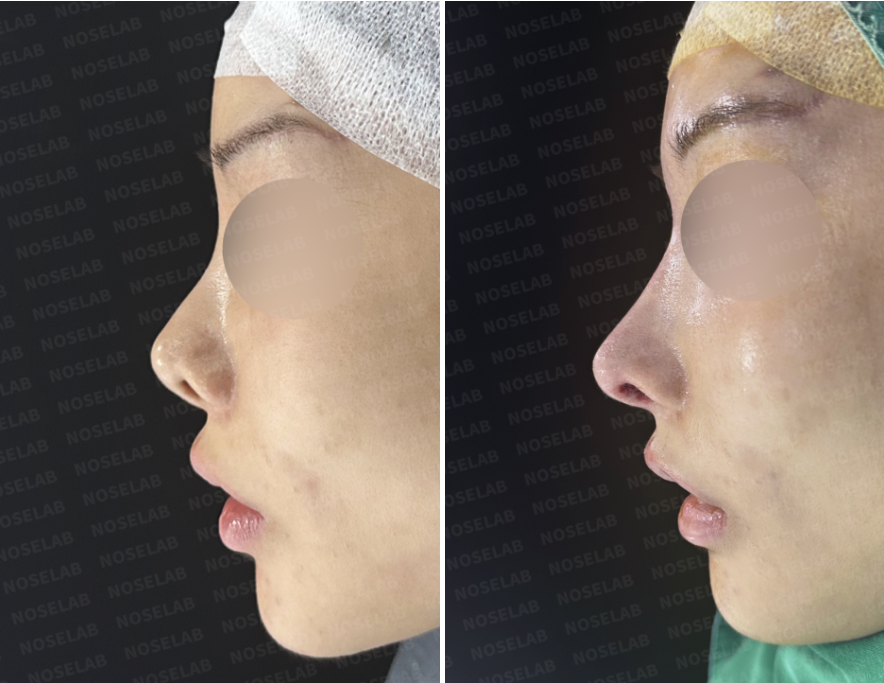Excessive Nostril Reduction Reconstruction – Case Study of Structural and Functional
- noselab
- 2024년 12월 17일
- 2분 분량
최종 수정일: 9월 26일
Excessive Nostril Reduction Reconstruction – Case Study of Structural and Functional Restoration
Hello, I’m Dr. Cha-Young Kang, Director of Nose Lab Clinic.
This case highlights the challenges and solutions in reconstructive rhinoplasty following excessive nostril reduction. The patient had undergone multiple rhinoplasties, including aggressive alar reduction, resulting in scarring, asymmetry, and functional obstruction.
Patient’s Surgical History
10 years ago: Bulbous tip correction, ear cartilage graft, silicone implant
6 years ago: Ear cartilage graft, silicone replacement, septal cartilage graft
3 years ago: Donor rib cartilage graft, silicone replacement, excessive nostril reduction surgery
Additional: Nasal obstruction surgery

Key Symptoms and Patient Requests
Severe nasal obstruction (worse on the left)
Lower nasal starting point
Balanced, natural-looking nose (not elongated)
Soft nasal tip with refined contours
Straight dorsum and improved symmetry
Lower columella for corrected nasolabial angle

Preoperative Analysis
Frontal View:
Blunt, undefined nasal tip
Crooked nose
Indistinct nasal contour
Overall unnatural appearance
Side Profile:
No visible columella
Droopy tip with poor projection
Oblique View:
Irregular implant outline
Blunt, heavy nasal tip
Nostril View:
Severe scarring from previous nostril reduction
Asymmetrical, contracted nostrils
Deviated columella
Surgical Plan and Procedures
Structural Reconstruction:
Rib cartilage graft for septal extension and framework support
Reconstruction of alar cartilages
Aesthetic Refinement:
Lowering the columella for an improved nasolabial angle
Removal of scar and excess soft tissue
Tip refinement for natural definition
Functional Improvement:
Septal deviation correction
Turbinate reduction surgery to improve nasal airflow
Postoperative Results

Frontal View:
Sharper, defined tip
Balanced, symmetrical nostrils

Side Profile:
Lowered nasal starting point
Improved tip projection and columella positioning

Oblique View:
Straight dorsum with smooth profile
Harmonized facial proportions

Nostril View:
Improved symmetry
Stabilized columella
Specialist Insight


Excessive nostril reduction leaves permanent, high-risk changes. Overcorrection causes irreversible scarring and contraction, making reconstruction technically challenging.
Key insights:
Always avoid aggressive nostril reduction.
For bulbous tips, nostril reduction should be a last resort.
Conservative approaches prevent long-term complications.
At Nose Lab Clinic, our goal is to restore both structure and function, while achieving the most natural balance possible. Prevention remains the best strategy, but when complications arise, advanced reconstructive techniques can deliver stable, satisfying results.
Nose Lab performs all procedures via closed rhinoplasty.

Messenger(WhatsApp) : +82 1057360302
Home page : www.noselab.co.kr
Instagram : noselab_global
YouTube : Noselab
Email : noselab@naver.com



댓글